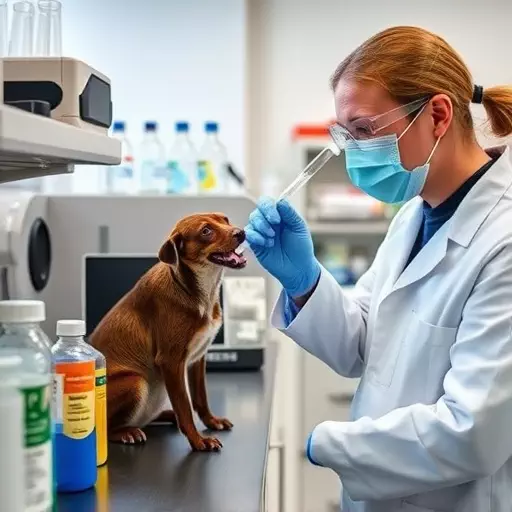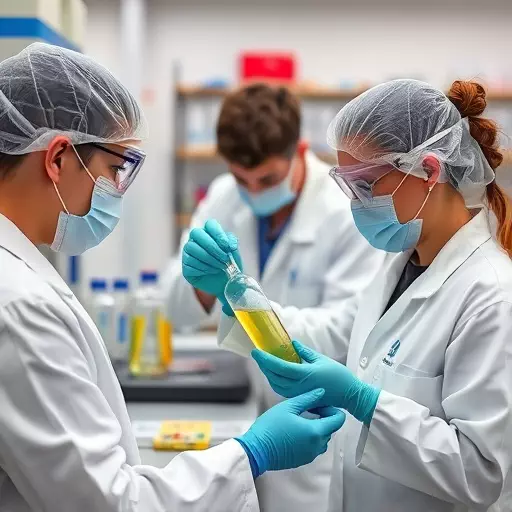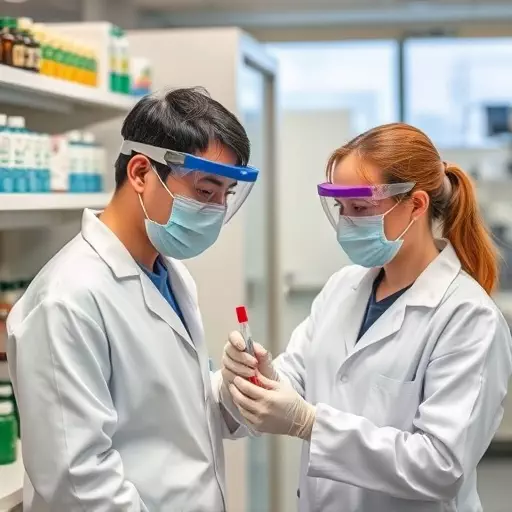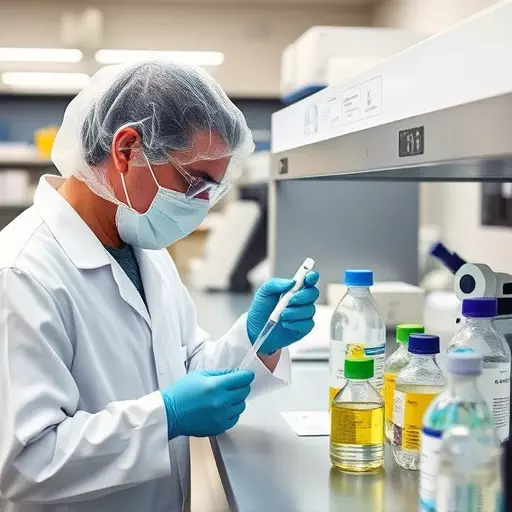Specialized labs in South Bend-Mishawaka, MI, use controlled drought simulations and animal testing to identify resilient bacteria and predict zoonotic spillovers. This research is vital for understanding and mitigating global health risks associated with increasing droughts worldwide due to climate change. By studying these extreme conditions, scientists gain insights into disease dynamics and develop strategies to protect communities from potential public health crises.
“Droughts pose significant challenges to global health and ecosystems, prompting researchers to turn to advanced lab settings for critical studies. This article explores the vital role of laboratories in South Bend-Mishawaka, MI, and beyond, as they simulate prolonged drought conditions to decipher disease dynamics. We delve into controlled environments that reveal bacterial resistance and their impact on zoonotic spillovers. Additionally, animal testing labs are utilized to monitor and prevent epidemics during these harsh environmental events, offering valuable insights for global health management.”
- The Role of Labs in Simulating Drought Conditions
- – Importance of controlled environments for studying drought impacts
- – Techniques used in South Bend-Mishawaka, MI labs to replicate prolonged droughts
The Role of Labs in Simulating Drought Conditions

In specialized labs like those found in South Bend-Mishawaka, IN, researchers are employing lab work to simulate extreme environmental conditions, particularly prolonged droughts. These simulations are crucial for understanding how such conditions impact various ecosystems and, consequently, disease dynamics. By recreating drought scenarios, scientists can study the resilience of different pathogens and vectors, identifying resistant bacterial strains that may pose global health threats. This knowledge is vital for developing strategies to mitigate the spread of diseases during droughts, given the increasing frequency and intensity of these events worldwide.
Moreover, labs focused on zoonotic spillovers play a significant role in monitoring and understanding disease transmission between animals and humans. Through animal testing, researchers can track emerging infectious diseases, predict potential outbreaks, and implement early interventions. This proactive approach is essential for public health, especially in regions where environmental changes, including droughts, disrupt ecosystems, fostering the emergence of new zoonotic pathogens. Such lab-based studies are integral to global health strategies, ensuring that communities are better prepared to face the challenges posed by changing climatic conditions.
– Importance of controlled environments for studying drought impacts

In the quest to understand the complex interplay between prolonged droughts and disease spread, controlled environmental settings in labs play a pivotal role. These spaces, akin to oases of consistency amidst the variable natural world, offer researchers the chance to isolate and study specific variables, providing invaluable insights into drought-induced ecological shifts. The lab work conducted in South Bend-Mishawaka, IN, and similar global health labs, serves as a cornerstone in this exploration. Here, scientists can meticulously cultivate and manipulate conditions that mimic prolonged droughts, allowing them to observe the subsequent behavior of pathogens, vectors, and host organisms.
One critical aspect is identifying resistant bacterial strains through lab experiments. By simulating drought scenarios, researchers can uncover bacteria with enhanced survival mechanisms, offering a glimpse into potential disease resilience during arid periods. Additionally, animal testing labs enable the monitoring of zoonotic spillovers—diseases transmitted from animals to humans—a growing concern in drought-prone regions. These labs facilitate the tracking of pathogens’ evolution and transmission dynamics, providing essential data for developing targeted interventions and strategies to mitigate health risks associated with environmental changes.
– Techniques used in South Bend-Mishawaka, MI labs to replicate prolonged droughts

In the heart of South Bend-Mishawaka, MI, research laboratories are employing innovative techniques to mimic prolonged droughts, a crucial step in understanding their impact on disease dynamics. These advanced facilities utilize controlled environmental chambers to create arid conditions, simulating the stress that drought imposes on ecosystems. By subjecting various organisms and pathogens to these simulated drought scenarios, scientists gain valuable insights into how such conditions influence microbial growth, survival, and virulence. This lab work in South Bend-Mishawaka in-MI is pivotal for identifying resistant bacterial strains, which can adapt to harsh environments, and thus pose potential risks to global health.
Concurrently, animal testing labs play a significant role in monitoring zoonotic spillovers, where diseases jump from animals to humans. By studying the behavior of pathogens under drought conditions, researchers can better predict disease spread patterns and develop targeted interventions. These efforts are essential for public health preparedness, especially as climate change increases the frequency and intensity of droughts worldwide, potentially leading to unprecedented disease outbreaks.
